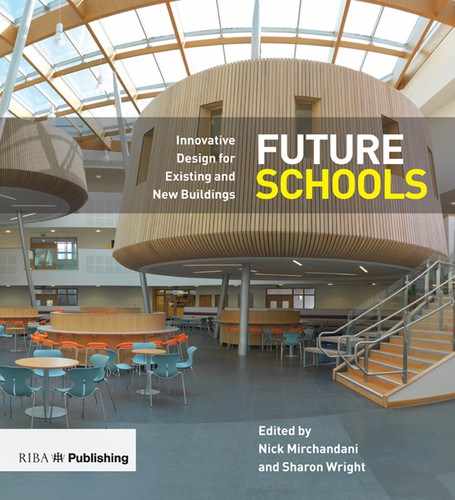Conclusion
It is an often-quoted truism regarding the future delivery of education that the only thing of which we can be sure is that we don’t know what it will look like. Certainly, we cannot predict the world it will need to serve. Thirty year-olds in work today are already doing tasks and using tools that were never dreamt of when they were in school at the end of the last century. The ever-increasing pace of change means that today’s students will need to retrain not once or twice, but throughout their lifetimes.
In contrast, even in the relatively recent past, knowledge was a restricted resource, held within education by teachers whose primary role was to pass it on, along with an understanding of its use and application. In the world of Wikipedia and Twitter however, knowledge is freely available and ubiquitous. Instead of merely acquiring and retaining knowledge, today’s students need to know how to source, evaluate, manage and manipulate it. While this was always the case to a degree, the balance between knowledge acquisition and learning skills has changed fundamentally. Combine the new technology-dependent economy with an increasing internationalism in the employment market and it is clear that above all, today’s students need to leave school with the skills to learn and re-learn rather than simply having acquired specific aspects of knowledge.
In developing this book we have had the rare luxury of reflecting on not just the recent past, during which we have seen a flurry of school building, but also on the historical relationship between education and design. Collectively we need to be better at understanding and using what we already know, evidencing what works and reminding those who oversee the funding regimes that there is a rich history on which to draw.
For example, when we compare many new school buildings with 19th and 20th century models, the similarities are more apparent than the differences. Although the technologies and teaching methods used within schools have changed dramatically, the buildings themselves are very familiar. Building Bulletin 103, published in 2014, lists exactly the same categories of space as the first Building Bulletins over 60 years ago – classrooms, laboratories, workshops, halls, dining areas, offices, storage, circulation and so on. Moreover, the balance in space allocated to these different functions remains virtually identical.
Compare instead how the workplace has changed in the same period (from factories to call centres, cellular to open-plan, hierarchical to democratic) and the divergence is even more apparent. While workplaces have become more varied and even virtual, the latest guidance on school design suggests the most proscriptive, rigid and standardised requirements for a generation.
Much of what is included in this book is not radical – it is practical, appropriate and based on experience. It has a focus on doing the right things, in the right way, with the right people involved. Successful buildings are the result of good processes – having a shared vision and getting the brief right, communicating well, using the latest technologies and construction methods to drive down costs and deliver value for money. Despite the fact that the examples range from new-build schools with large budgets to small refurbishments with limited funding, all show a level of expertise, creativity and innovation that demonstrate the sector’s resilience to political or funding changes.
Perhaps the most interesting aspect of school design over the last century is the debate around standardisation and the various attempts to bring some framework to what a school should look like. The Victorians did it, as did pre- and postwar educationalists and architects. More recently, the BSF Exemplar Designs started the conversation about how schools should respond to new models of education. While the latest iteration, the EFA’s Baseline Designs, are not intended as a ‘cookie cutter’ solution to be replicated across the country, they do present similar challenges to their predecessors. Once you set a template and make it the driver for funding, you have to be very sure that there is enough flexibility within the system to allow it to stand the test of time. It is inevitable that recent reductions in area allowances and funding have inevitably reduced that flexibility, both in terms of design freedom and schools’ use of space.
Another risk of standardised designs is that a one-size-fits-all approach also means an all-or-nothing solution. Even if such designs are fit for today’s needs, new school buildings are intended to last for 60 years or more. If the standardised model proves inflexible and unable to meet changing requirements then there is a risk that we will end up with a generation of similarly obsolete buildings. Were this to happen, it would not be for the first time. The system-built schools of the 1950s and 1960s suffer the same repeated flaws, most notably with regard to their environmental performance in a technology intensive, high energy-cost, low carbon future.
With such uncertainty regarding tomorrow’s requirements we need above all to deliver flexible and adaptable buildings. Irrespective of particular funding regimes or procurement systems we must therefore demand:
- Continued experimentation, without which we will never discover those creative solutions that can best meet and adapt to future demands.
- Rigorous evaluation of the success and failures of different approaches, and debate about how we deliver design solutions that are both affordable and flexible enough to meet the inevitable changes any school building will encounter in its lifetime.
- An engagement process that allows for vigorous dialogue between educationalists, designers and building users as to what makes an effective learning environment.
This book seeks to be part of that dialogue, informing those involved as to each other’s concerns, highlighting common issues and identifying successful and potentially repeatable solutions.
Nick Mirchandani & Sharon Wright

